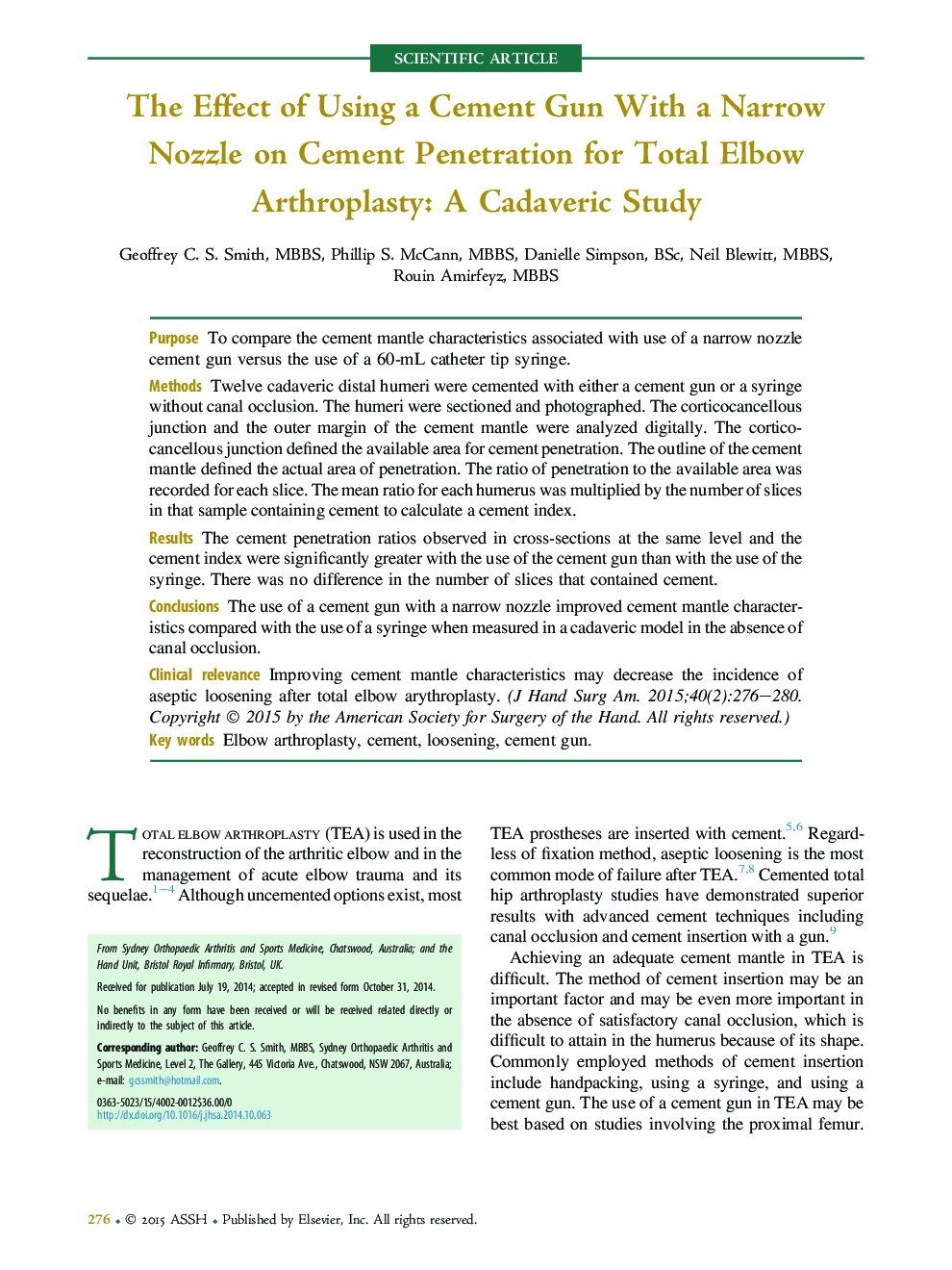| Article ID | Journal | Published Year | Pages | File Type |
|---|---|---|---|---|
| 4067245 | The Journal of Hand Surgery | 2015 | 5 Pages |
PurposeTo compare the cement mantle characteristics associated with use of a narrow nozzle cement gun versus the use of a 60-mL catheter tip syringe.MethodsTwelve cadaveric distal humeri were cemented with either a cement gun or a syringe without canal occlusion. The humeri were sectioned and photographed. The corticocancellous junction and the outer margin of the cement mantle were analyzed digitally. The corticocancellous junction defined the available area for cement penetration. The outline of the cement mantle defined the actual area of penetration. The ratio of penetration to the available area was recorded for each slice. The mean ratio for each humerus was multiplied by the number of slices in that sample containing cement to calculate a cement index.ResultsThe cement penetration ratios observed in cross-sections at the same level and the cement index were significantly greater with the use of the cement gun than with the use of the syringe. There was no difference in the number of slices that contained cement.ConclusionsThe use of a cement gun with a narrow nozzle improved cement mantle characteristics compared with the use of a syringe when measured in a cadaveric model in the absence of canal occlusion.Clinical relevanceImproving cement mantle characteristics may decrease the incidence of aseptic loosening after total elbow arythroplasty.
